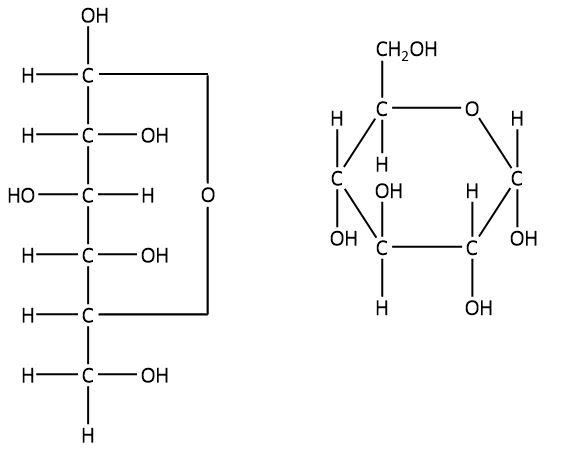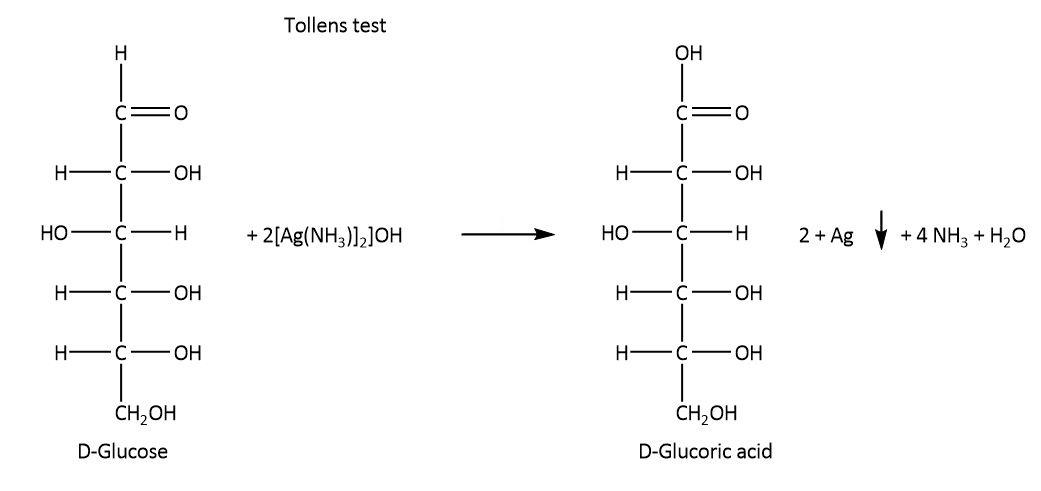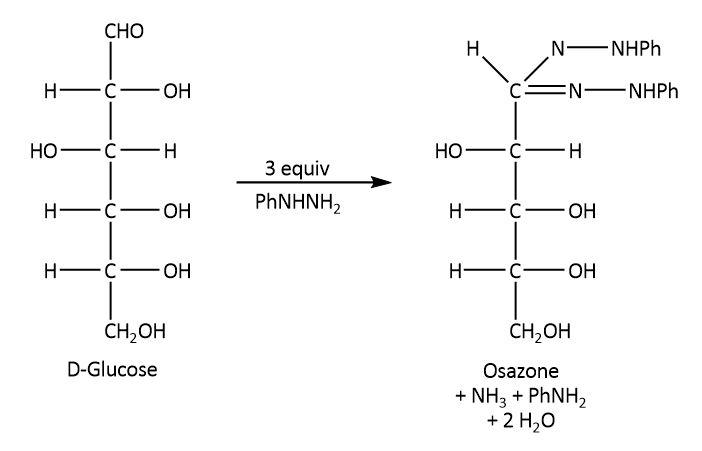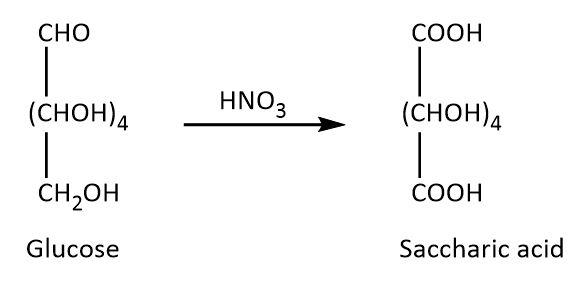
How can you say that glucose is a cyclic compound?
A. Glucose undergoes Tollens reaction
B. Glucose reacts with phenylhydrazine
C. Glucose fails to react with sodium hydrogen sulphite
D. Glucose reacts with nitric acid
Answer
486.6k+ views
1 likes
Hint: We know that glucose is one of the six carbon-containing hexopyranose usually represented in the Haworth projection formula. It is also known that there is no free
Complete step by step answer:
The cyclic structure of carbohydrates or more specifically a monosaccharide is represented by using the general way of writing the structural formula that is called a Haworth projection formula. The Haworth projection formula specifies the hydrogen and the hydroxyl group arranged up and down of the carbon atom. The cyclic and straight chain structures of glucose are shown below.

Glucose consists of an aldehyde group. However, it does not undergo reaction with sodium hydrogen sulphite in order to form bisulphite addition products. This is due to the fact that this reaction occurs in the presence of a free aldehyde group, but there is no free
On the other hand, glucose undergoes Tollens reaction, it also reacts with phenyl hydrazine and nitric acid as these reactions require lower concentration of free aldehyde group. The respective reactions are shown below.



Hence, we can say that Glucose fails to react with sodium hydrogen sulphite.
Thus, the correct option is C.
Note:
As we know that, hexopyranose is a six carbon-containing pyranose ring in the Haworth projection formula so it shows us that glucose has a cyclic structure. Also, Glucose X-ray analysis shows the presence of both the ring structure, as well as, the size of the ring.
Complete step by step answer:
The cyclic structure of carbohydrates or more specifically a monosaccharide is represented by using the general way of writing the structural formula that is called a Haworth projection formula. The Haworth projection formula specifies the hydrogen and the hydroxyl group arranged up and down of the carbon atom. The cyclic and straight chain structures of glucose are shown below.

Glucose consists of an aldehyde group. However, it does not undergo reaction with sodium hydrogen sulphite in order to form bisulphite addition products. This is due to the fact that this reaction occurs in the presence of a free aldehyde group, but there is no free
On the other hand, glucose undergoes Tollens reaction, it also reacts with phenyl hydrazine and nitric acid as these reactions require lower concentration of free aldehyde group. The respective reactions are shown below.



Hence, we can say that Glucose fails to react with sodium hydrogen sulphite.
Thus, the correct option is C.
Note:
As we know that, hexopyranose is a six carbon-containing pyranose ring in the Haworth projection formula so it shows us that glucose has a cyclic structure. Also, Glucose X-ray analysis shows the presence of both the ring structure, as well as, the size of the ring.
Latest Vedantu courses for you
Grade 11 Science PCM | CBSE | SCHOOL | English
CBSE (2025-26)
School Full course for CBSE students
₹41,848 per year
Recently Updated Pages
Master Class 9 General Knowledge: Engaging Questions & Answers for Success

Master Class 9 English: Engaging Questions & Answers for Success

Master Class 9 Science: Engaging Questions & Answers for Success

Master Class 9 Social Science: Engaging Questions & Answers for Success

Master Class 9 Maths: Engaging Questions & Answers for Success

Class 9 Question and Answer - Your Ultimate Solutions Guide

Trending doubts
State and prove Bernoullis theorem class 11 physics CBSE

What are Quantum numbers Explain the quantum number class 11 chemistry CBSE

Who built the Grand Trunk Road AChandragupta Maurya class 11 social science CBSE

1 ton equals to A 100 kg B 1000 kg C 10 kg D 10000 class 11 physics CBSE

State the laws of reflection of light

One Metric ton is equal to kg A 10000 B 1000 C 100 class 11 physics CBSE




